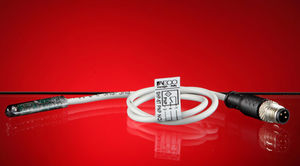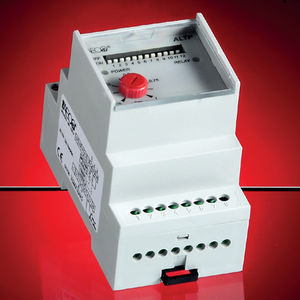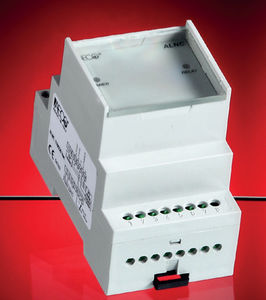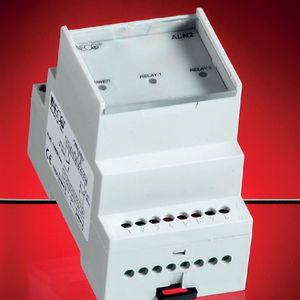
- Products
- Catalogs
- News & Trends
- Exhibitions
Capacitive proximity sensor SC seriesmechanicalcylindricalM30






Add to favorites
Compare this product
Characteristics
- Technology
- capacitive, mechanical
- Shape
- cylindrical
- Diameter
- M30, M18
- Output signal
- 2-wire, 4-wire
- Mounting
- threaded
- Material
- plastic
- Protection level
- IP67
- Other characteristics
- with amplified output
- Measuring range
Min.: 0 mm
(0 in)Max.: 25 mm
(0.98 in)- Process temperature
Min.: -20 °C
(-4 °F)Max.: 70 °C
(158 °F)
Description
Capacitive sensors are electronic transducers that generate an output signal when any solid or liquid material (wood, metal, plastic, water, alcohol, etc.) enters their sensitive area, without necessarily coming into contact with them.
They can be used for applications such as transit checks, part counting and level controls for liquids or ground and granular solids. They sense the presence of liquids or solids, including through non-metallic containers, without coming into contact with the material being monitored; for example, they can verify the transit of ground or granular products through tubes or plastic or plexiglass panels in milling plants or pasta factories. The electrical specifications include 3 and 4-wire, amplified direct current sensors and 2-wire, amplified alternating current sensors.
The capacitive proximity sensors consist of cylindrical M18 and M30 threaded bodies with fixing rings, and are available in a wide range of electrical and mechanical configurations, rapid or delayed intervention and connector or hard-wired versions.
To select your product, consult the online PDF catalogue or search using the product selector.
Catalogs
Related Searches
- Proximity switch
- Acceleration sensor
- Cylindrical proximity switch
- Photoelectric sensor
- Inductive proximity switch
- IP67 proximity switch
- Cubic photoelectric sensor
- Threaded proximity switch
- Compact acceleration sensor
- Magnetic proximity switch
- Rectangular proximity switch
- Infrared photoelectric sensor
- Cylindrical photoelectric sensor
- Waterproof photoelectric sensor
- Red light photoelectric sensor
- IP67 photoelectric sensor
- PNP proximity switch
- M12 proximity switch
- Capacitive proximity switch
- Plastic proximity switch
*Prices are pre-tax. They exclude delivery charges and customs duties and do not include additional charges for installation or activation options. Prices are indicative only and may vary by country, with changes to the cost of raw materials and exchange rates.





















